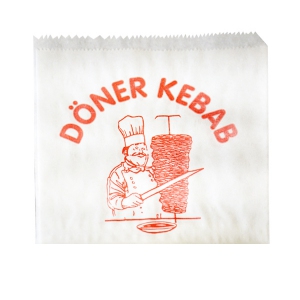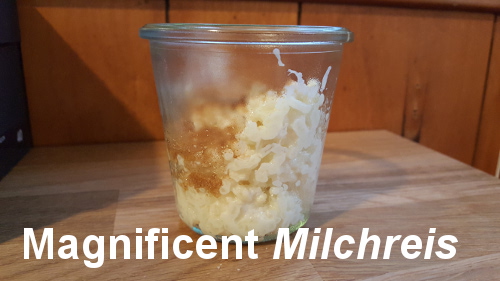I ate a €19 Döner Kebab.
The Döner, as it’s best known, is one of my favorites of German cuisine. It was supposedly invented by Nadir Kurim in Berlin in the ‘70s but is suspiciously like food eaten for decades – if not centuries – in the Middle East, Greece and Turkey (and elsewhere). When I first read about the €19 Adlon Döner, available at the Adlon Hotel near the Brandenburg Gate, I put it on the list of things I might do some day but probably wouldn’t – right next to salmon fishing in New Zealand and underneath running for president of the United States of America. Might, but probably won’t.
Then the €19 Döner became a bit of a thing in the office, its momentum unstoppable. Besides, the Brandenburg Gate is a scant two subway stops (or 20-minute walk) from the office. But even after we decided it had to happen it almost didn’t happen. When I and my co-worker (colleague for you Europeans) arrived at the Adlon for lunch that day, the Egyptian president was trying to leave. German police officers told us that no one could go in while Abdel Fattah el-Sisi was going out. “10 to 15 minutes,” he said but the officer was bad at math – it was half an hour.
Once inside we discovered two things. First: You can only eat the €19 Döner in the lobby bar (the hotel’s restaurants charge more than that for just a glass of tap water). And, second, the cooks in the lobby bar have put their own Berlin spin on several delicacies. My co-worker, for example, tried a Berlin Reuben sandwich. It of course had sauerkraut but instead of Pastrami Kassler – smoked, pickled pork – and heavy, gray German rye bread rather than a light American rye with caraway seeds. Kassler was supposedly invented by the Cassel butcher shop in Schöneberg in the 19th century, though there is some culinaro-historical doubt.
The Döner, like its Berlin sibling the currywurst, is basic working person’s food, which means it’s great when you’re drunk. The meat is usually buried in too many spices and served by fast food outlets with questionable hygienic standards. A good Döner starts with just meat and bread, and then varies by the quirks of the eatery and customer. Mustafa’s, Berlin’s most famous (and inexplicably so) Dönerbude, for example, throws in grilled vegetables, sea salt and soy sauce, as if the doctored meat doesn’t already have enough sodium. Three sauces are generally available – herb, spicy and garlic – and Döners are then topped with onions, lettuce/cabbage, tomatoes and maybe even more seasoning. Since everyone gets to pick what goes on their own Döner, it’s the country’s most democratic dish.
The Adlon Döner
Service at a Dönerbude is always curt and gruff, like Berlin. So it was odd to be ordering a Döner with my inside voice while surrounded by leftover Egyptian dignitaries. I was more than a little disappointed when the waiter didn’t bark in accented German: “Sosse, bitte? Salat komplett?” (Which sauce, all the veggies?)

Like all Döner Kebabs, the Adlon Döner comes in a paper wrapper but unfortunately not that paper wrapper sporting a red line drawing of a Döner cook with his giant knife and indeterminate meat-on-a-spit. The Adlon has enough of a sense of humor to charge €19 for a Döner but not enough to keep the joke going. It’s made with veal (sorry, I still feel guilty) cooked medium rare and sliced thin. They add red and white cabbage, tomatoes, some fresh herbs and onion seeds and finish it with a creamy truffle sauce. It all felt well-balanced and put together, like a Netflix series. I love truffles but I also like a little fire with my Doner so: ☹.
The Adlon Döner was good, but not €19 good. I’d say maybe €8 good, €9 tops. But that extra €10 didn’t go to waste — it just puts the Adlon Döner in the same category as Crossfit and veganism. These are things you don’t do to do, you do them so you can tell everyone you do them, like in a blog.
The Adlon Döner also feels a bit condescending, or like class appropriation. “Bah,” the Adlon seems to be saying. “We can do that better than you peons!” Though, they can’t – unlike the Adlon Döner, a real Döner is supposed to be sloppy and culinarily imbalanced. It’s eaten quickly while one decides whether to wait for the night bus or just splurge on a taxi. A Döner is one of the things you regret the least from a night out.
“I’ll be the Adlon’d serve you one drunk at 2 am,” my lunch companion said. We agreed to get drunk some night and try it out, though then I could only afford the night bus.
Upon reflection, her Reuben seemed the more successful experiment.
After lunch I wanted to check out the Adlon bathrooms (they’re downstairs, if you need them). I washed my hands next to a Berlin cop left over from the president’s army of protectors. I watched as he used the towel he dried his hands with to turn off the faucets and open the bathroom doors.
“Smart,” I said to him. “Don’t want to leave any fingerprints.”
He didn’t say a word and looked back at me a couple times as we ascended the stairs. Someone on Twitter pointed out that maybe he wasn’t really a cop and there was a naked police officer tied up in a basement broom closet somewhere.
“I wonder if the Egyptian president tried the Döner,” I thought.
Leave a Comment
